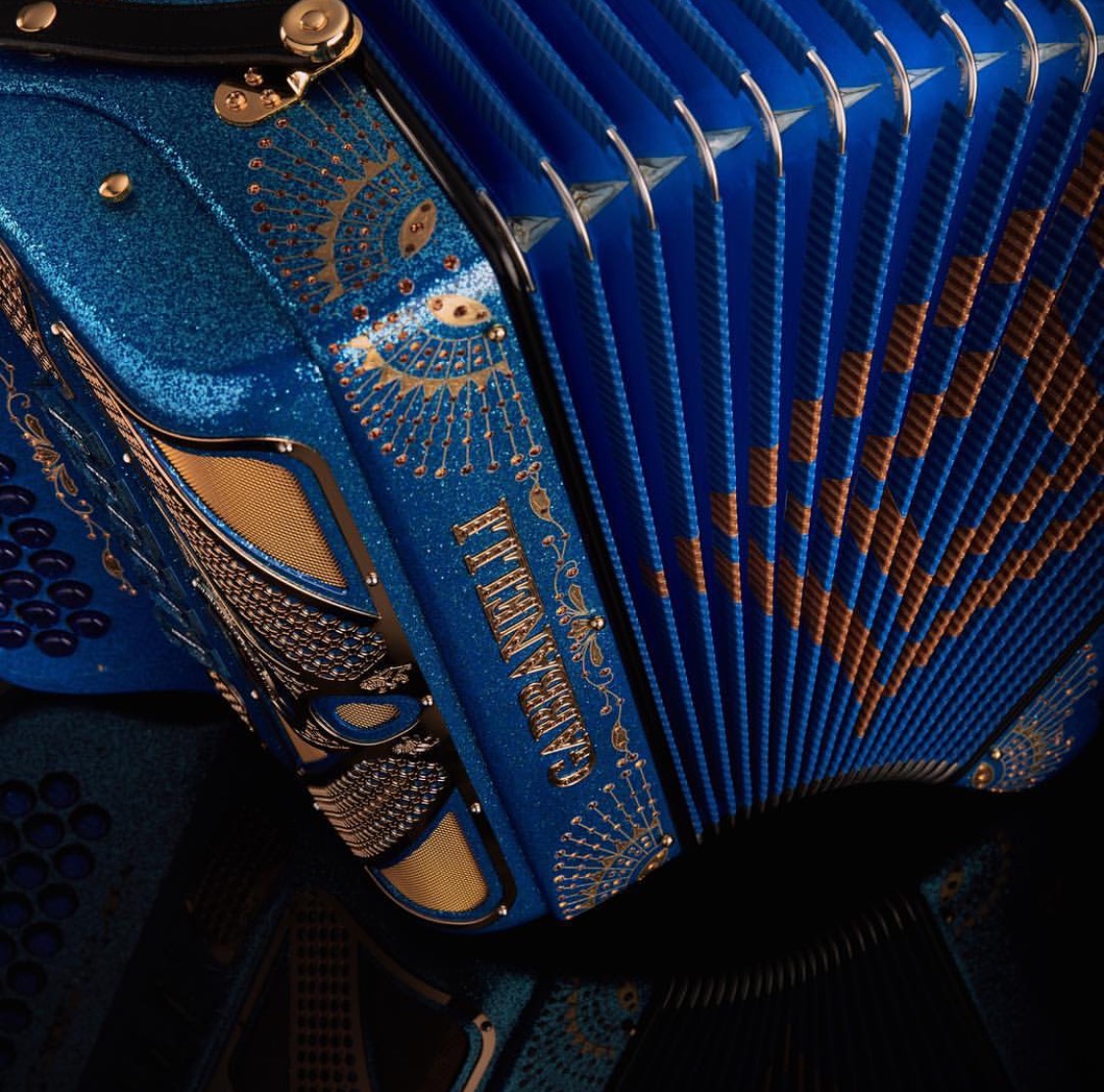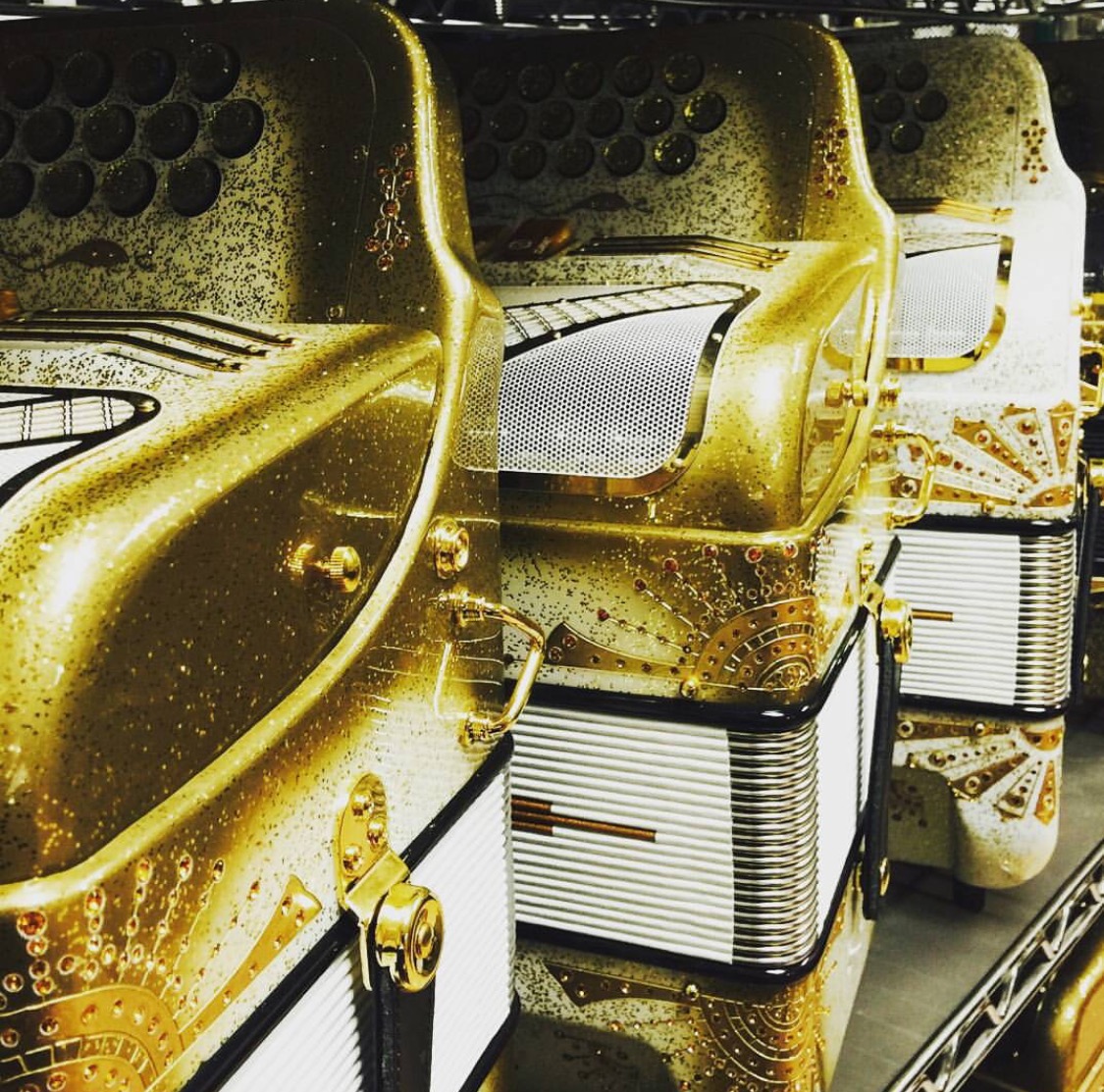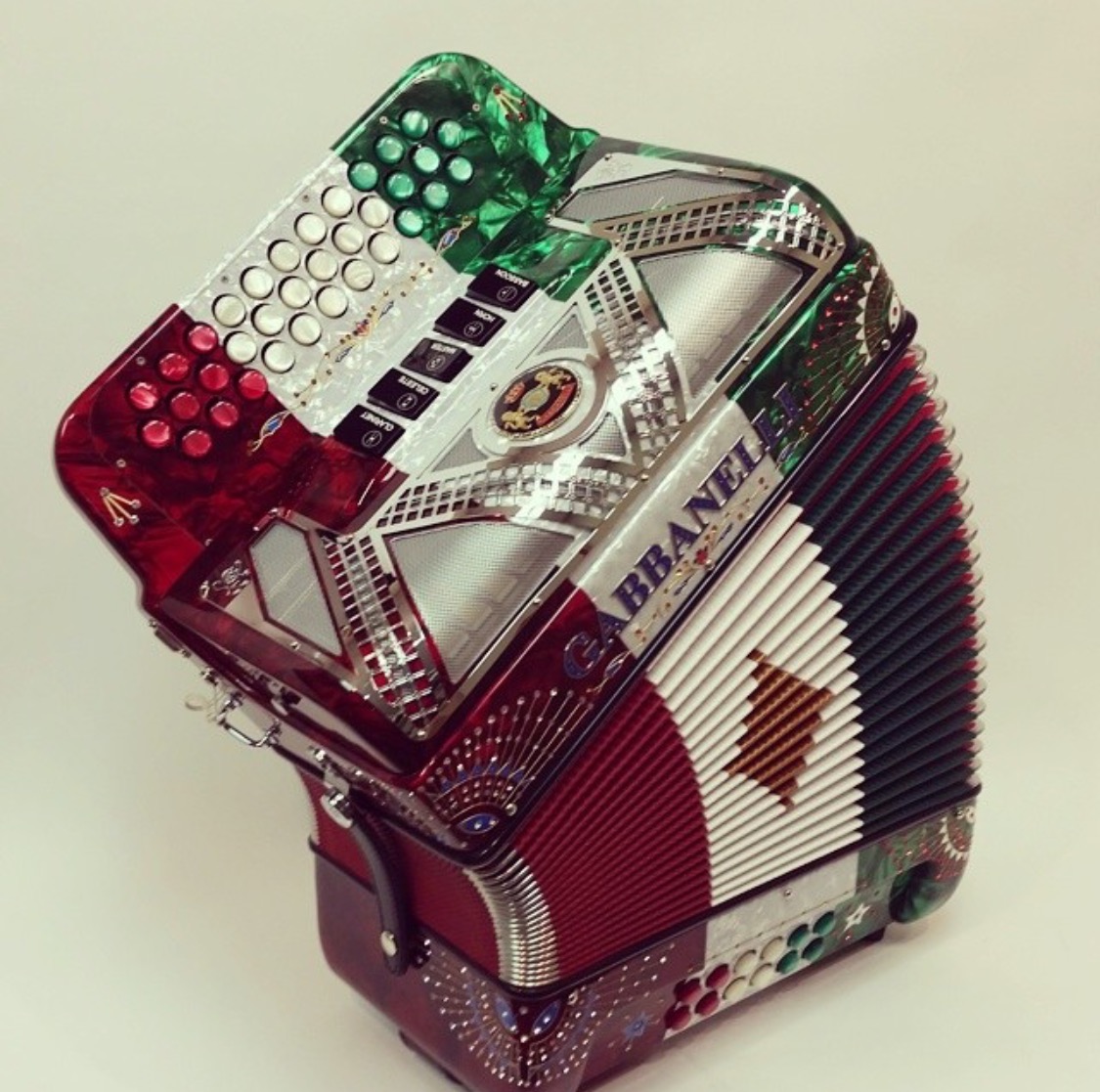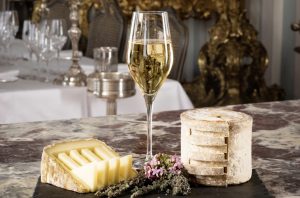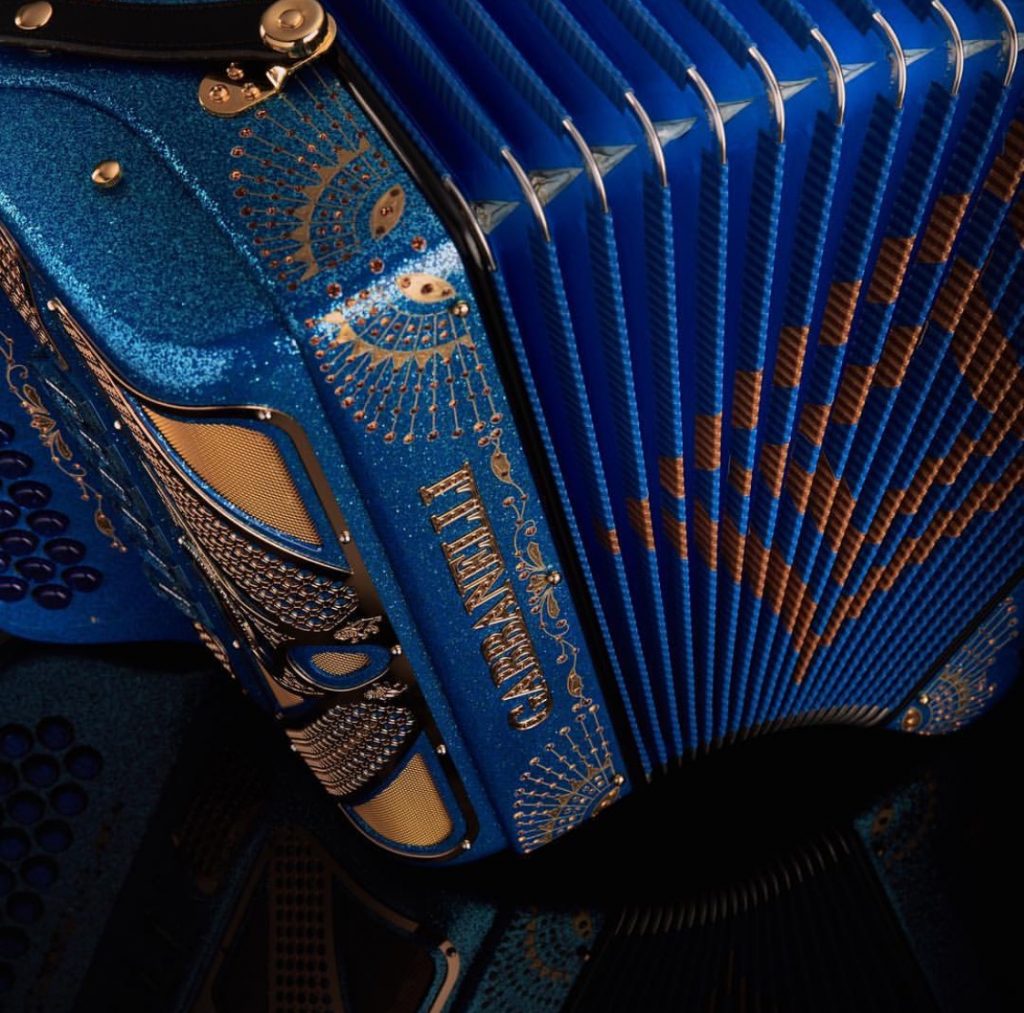
An accordion is equal parts math and magic, a glistening and gorgeous instrument on the outside, airtight and busy on the inside.
More than 1,000 pieces are required to make one, including mirrored buttons and Swarovski crystals for flash. The pearllike shell is celluloid dipped into a vat of acetone and water, which goes soft onto the wood case and requires a month to dry before it’s buffed and sanded to a creamy candy-colored finish. Inside pieces are held in place with beeswax. Each reed is handmade. The metal is harmonic steel imported from Sweden, which resists oxidation. Tension on the springs inside must be perfect.
Mike Gabbanelli lives inside the accordion. He’s a third-generation artisan schooled in the minutiae required to produce one of these instruments. He has a warehouse where about 100 decrepit accordions sit.
“I won’t throw them away,” he says. “I know what it takes to build one of these instruments. Even if it’s toasted, I’m not going to chunk it away.”
The Gabbanelli store in southwest Houston is divided in half. Walk in the front door, and you’re standing in the showroom, which looks like an exploding rainbow, with radiantly colored Gabbanelli accordions of various sorts — diatonic, chromatic and piano – sparkling from the ample sunlight that pours through the front windows. The room is impeccably clean and not terribly cluttered.
Behind the counter, a door leads to messier confines, with a large workbench and accordion parts everywhere. A long line of accordions needing repairs sits on the floor. Some appear fine on the surface, others look like they fell from the back of a truck in a rain storm and were left to rust.
“Even the worst piece of junk I can make play again,” Gabbanelli says
He pushes through 15 to 20 repairs each day, the result of being a rarity in his field: a young craftsman attuned to the delicate nature of the instrument.
An accordion possesses a duality that represents its maker and its player. The inside is a meticulously constructed matrix of little pieces, precise and functional rather than flashy. The exterior screams with color and character. Gabbanelli quietly fuses these two elements together and passes the instruments along to spirited accordion players like Ramon Ayala and Intocable’s Ricky Muñoz, both Gabbanelli enthusiasts, who entertain thousands.
Gabbanelli juggles repairing the old with designing and producing the new. His father began making Gabbanelli brand accordions 50 years ago and started the Gabbanelli Accordions & Imports company in 1991. Gabbanelli and his wife, Elia, (he’s the company’s CEO and president, she serves as vice president) took over when he died in 2003 and have tried to balance the tradition of the trade with new developments that can enhance sound or durability.
Quietly intense, Gabbanelli, uses the word “artisan” several times as an understated shorthand for the knowledge and skill required to work with these instruments.
“He’s being modest,” his wife says. “He’s the youngest expert in the field.
Even her comment is modest. Only a handful of people in the world can precision-tune an accordion by ear.
That rarity of expertise can be attributed to changing musical trends. Gabbanelli has siblings, but he’s the only one who was sufficiently intrigued by his father’s craft to learn it. Gianfranco Gabbanelli came to the United States in 1961 from the Marche region of Italy,where he was a tuner in an accordion factory. Making musical instruments was family work – Mike Gabbanelli’s grandfather started at age 10 (he also worked with stringed instruments). One of Gianfranco Gabbanelli’s brothers specialized in making keys, another did woodwork.
The elder Gabbanelli’s decision to leave Italy was regarded by his family with shock, his son says. He came to Houston in 1961 to repair and tune Italian-made accordions. He got to Houston with $2 and no understanding of English. After arriving, he began going by the Anglicized version of his name, John.
He suffered through a lot of bad jobs, but he had a lot of pride, too,” Mike Gabanelli says. He made and sold Gabbanelli Accordions out of his home for 30 years before moving the operation to the West Bellfort location where it remains.
Houston was a prime place to be an accordion-maker, with accordions prevalent in three different musical genres: central Texas beer-hall music from Europe, Louisiana Cajun music and Mexican music moving up from the border.
All three types of music can still be heard in this region. And polka still shows signs of life in the Midwest. Several years ago, I witnessed an accordion night an hour or so north of Chicago, where a local diner turned into a festive open mic-type event. Visits to the American Accordionists Association’s annual gathering in Quincy, Mass., and A World of Accordions Museum near Duluth, Minn., suggest that current fans will keep squeezing out polka. But they don’t make a convincing case that it will be handed down to another generation.
Gabbanelli is eager to train young people for his factory where the new instruments are made. But he says he’d never press his children into the trade.
“My dad didn’t force me to do this,” he says. “I had brothers and sisters, but I was the only one who was interested. And I feel lucky, because it’s truly something that has been passed on; this business and his name.”
That name is golden among players of conjunto,norteño and ranchera, where demand for Gabbanelli’s accordions is strongest today. Band tour buses will occasionally stop in front of the unassuming building when an accordionist needs a new instrument or to have an old one repaired. Gabbanelli recalls the time he was in the back working and his father asked him to go to the showroom to deal with two customers, one of which was ZZ Top’s Billy Gibbons.
He said, ‘Mike, there’s some weird people out there, one has a big beard and one has green hair, go take care of them,’ ” Gabbanelli says.
Rock and pop bands generally lack an accordion. When the instrument does find its way into more mainstream fare, it’s often as an accent instead of a foundation.
But the accordion remains king in much Spanish-language music.
“With a lot of these Latin bands, the focal point is the accordionist,” Gabbanelli says. And he points out that the accordionists like for their instrument to draw attention.
“A lot of our customers like a little extra shine,” which he provides with ample use of Swarovski crystals.
“It’s like a rap video,” Elia Gabbanelli says. “They have the shiny cars they want to show off. These guys, it’s their accordion”
The Gabbanellis keep about 1,000 accordions in stock. “Everybody wants to see 50 before they decide on the exact one,” she says.
Between creating new designs and making daily repairs, Gabbanelli admits, “I’m spread pretty thin.”
He picks up an accordion and squeezes out a few notes. But typically, he says, he doesn’t play for enjoyment.
“I have to play 15 of these instruments each day to make sure they’re functioning properly,” he says. “If everything’s not perfect, the musician will know it immediately. They’re picky, and they have good ears. These guys didn’t learn off of books, they’re self-taught with their ears.
“It’s my job to let the musicians shine,” Gabbanelli says. “I’m happier being the guy who stays behind the scenes”
By Andrew Dansby for the chronicles
Details for Gabbanelli Acordions
Location : 4991 W Belfort St, Houston, Texas
Click here to get an accordion

